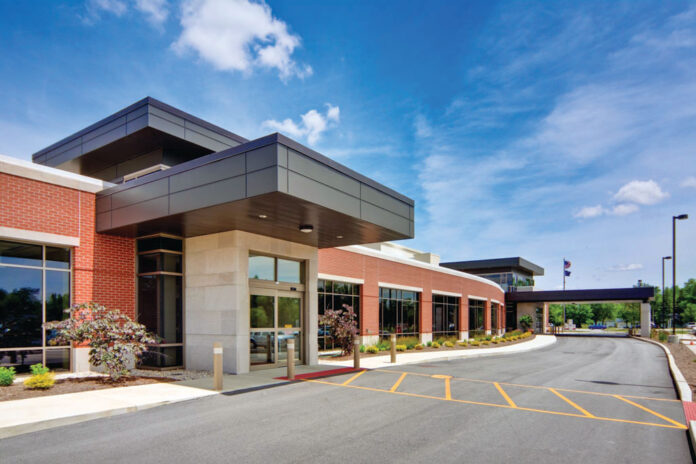By Ebony Chappel
Hospitals in the U.S. fall into one of two categories — publicly or privately owned. Private facilities typically operate under the auspices of a religious group or are owned by a corporation and usually exist as part of a larger hospital system, similar to a retail chain. Public facilities are owned by a city or county and are run by a board of trustees, oftentimes composed of appointed civic leaders or elected officials and a paid administrator who manages day-to-day operations.
Experts say there are definite pros and cons to hospitals under each ownership type, yet some seeking care still hold certain beliefs and stigmas when it comes to smaller facilities, whether public or private. Dave Hyatt, CEO of Jay County Hospital, said patients’ biggest concern is the quality of care. “In all honesty, I’m not sure it’s so much of a designation whether you’re publicly owned or privately owned in the non-profit world, but more so based on your size,” Hyatt said. “We have a St. Vincent facility located 20 miles south of us in Randolph County, and I don’t think anyone thinks they do any better or worse than we do because they’re owned by Franciscan St. Vincent.”
Hyatt said sometimes when hospitals are independent, like his county-owned facility, issues such as access to resources arise. Hyatt is actually a paid employee of IU Health, whose presence at Jay County is made possible via a management contract. Jay County is the only facility that has a partnership of this sort with IU Health, which was ranked on U.S. News and World Report’s Best Hospitals list this year.
Jay County, a critical access hospital, has 25 medical surgical beds and a 10-bed LifeBridge/ Senior Behavioral Health unit. The hospital offers a range of services including radiology and nuclear medicine services, cardiac rehabilitation, a sleep lab, infusion clinic, respiratory therapy, obstetrics department, outpatient surgery center and more. According to the National Rural Health Association, people living in rural areas tend to make less money per year than residents of non-rural areas. In fact, the average per capita income in rural areas is $7,417 lower than in urban areas.
This figure is even greater for minorities living in rural areas. Rural residents are also less likely to have employer-provided health insurance, and payouts from Medicare to rural hospitals tend to be lower. This demographic also experiences a variety of health disparities (increased cases of cardiovascular disease, alcohol and tobacco dependence, vehicular/machine injuries, etc.), causing their health care needs to differ from that of their urban counterparts. “When you’re small you have limited resources, but you’ve got to have good, solid management and a good, solid team,” said Hyatt. “Do we have the resources of some of the larger systems? No. My IT department has five or six people, where some large hospitals may have 60 to 70.” He added his employees often wear multiple hats and juggle responsibilities to meet the needs of their clients.
Many factors, including the economic recession and the implementation of the Affordable Care Act, have led to the closure of 57 rural hospitals since January 2010, but Jay County is forging ahead. “The ACA has had significant impact on the hospital. Whether you’re for or against the law, it has done a lot of good but it’s also made us challenge the way we do things. Nothing is perfect, but it’s a step in the right direction,” said Hyatt. “We have seen a slight decrease in our uninsured coming through the ER. However, with that you see an increase in Medicaid, and that still doesn’t cover the full cost of the care we provide.” In July alone, Jay County had 993 people come through its emergency room, many of whom do not have a primary care physician. “We are finding that people aren’t wanting to sign up for primary care. Now that they are insured, they are more apt to go directly to ER, and that has placed a challenge on our operations,” said Hyatt.
Last April, the hospital rolled out ClaimAid, an initiative to help rural residents become acclimated to how health care works, by assisting them in enrolling for a health insurance plan and choosing a primary care doctor. They have also recently brought in hospitalists to help with the process. According to columnist Jack Ronald of Portland, Indiana’s The Commercial Review, this was proof of Jay County Hospital “going the extra mile.” “Will it be a panacea? Of course not,” Ronald wrote. “But it is a meaningful step in the right direction.” “We talk about being the best in everything we do,” said Hyatt. “In a small hospital our patients are our family, neighbors and friends, so we have to provide the level of care we as clinicians would want and expect for our own family.”











